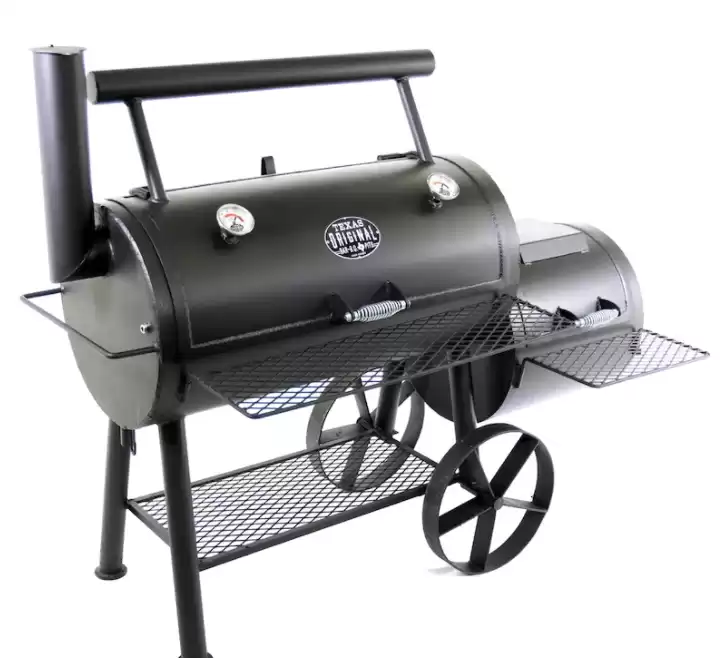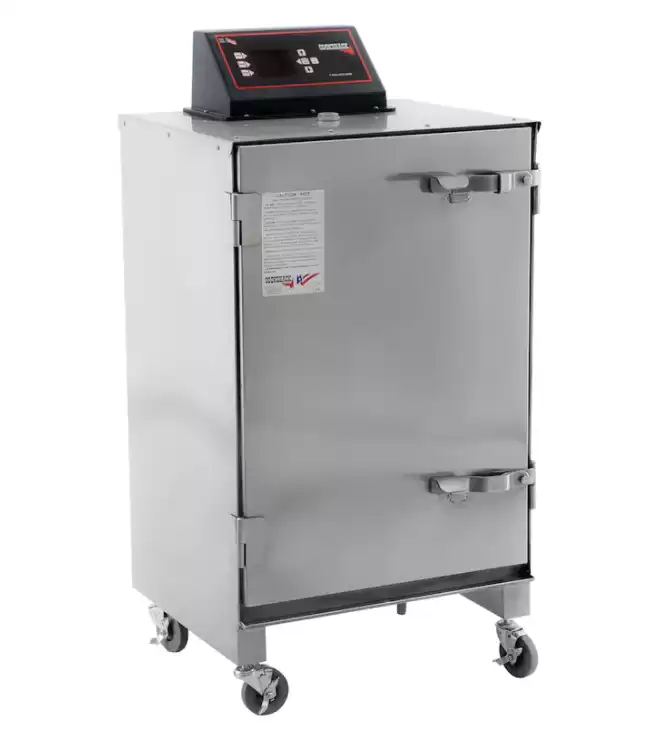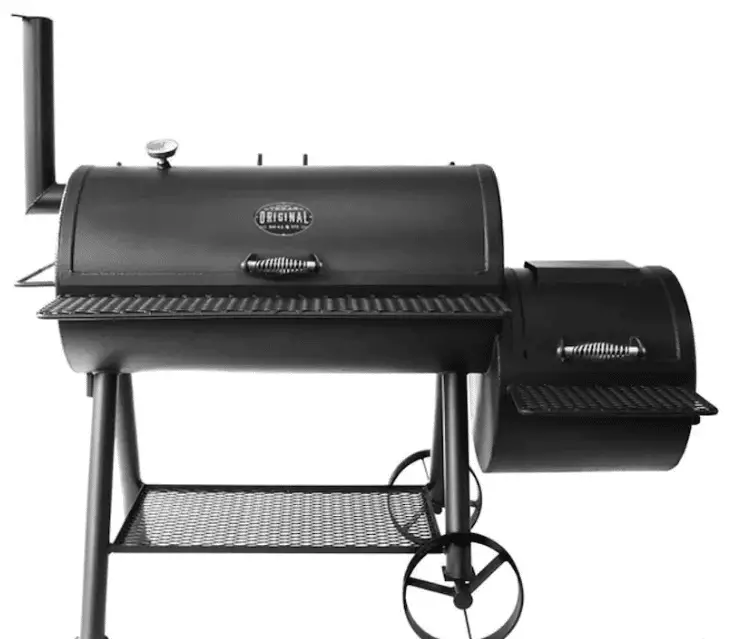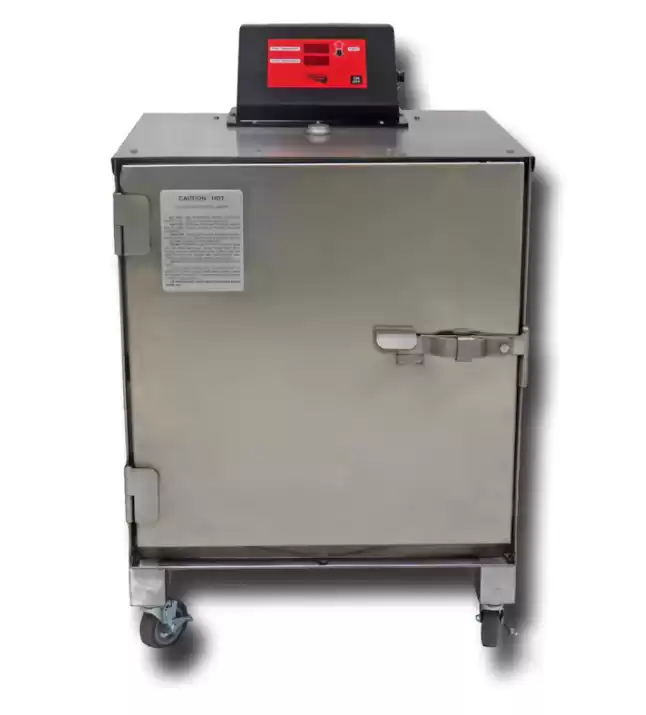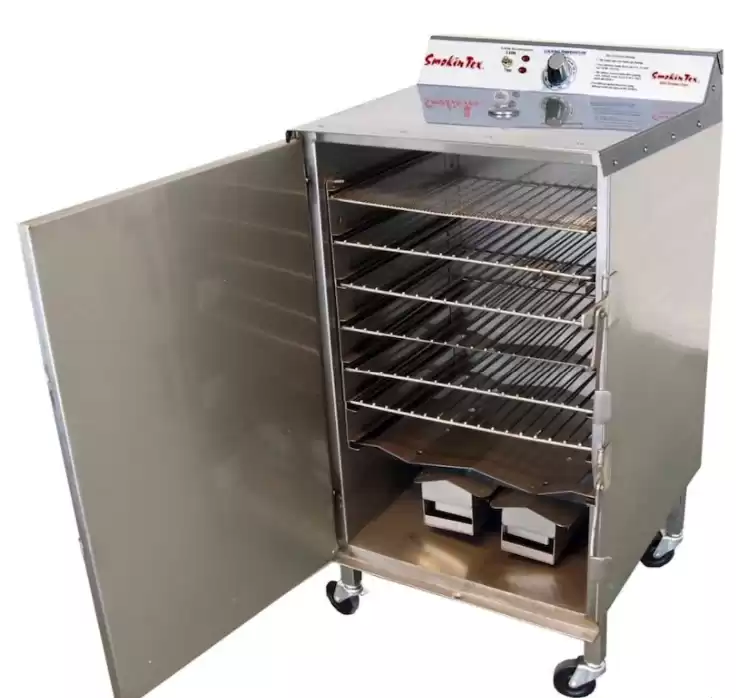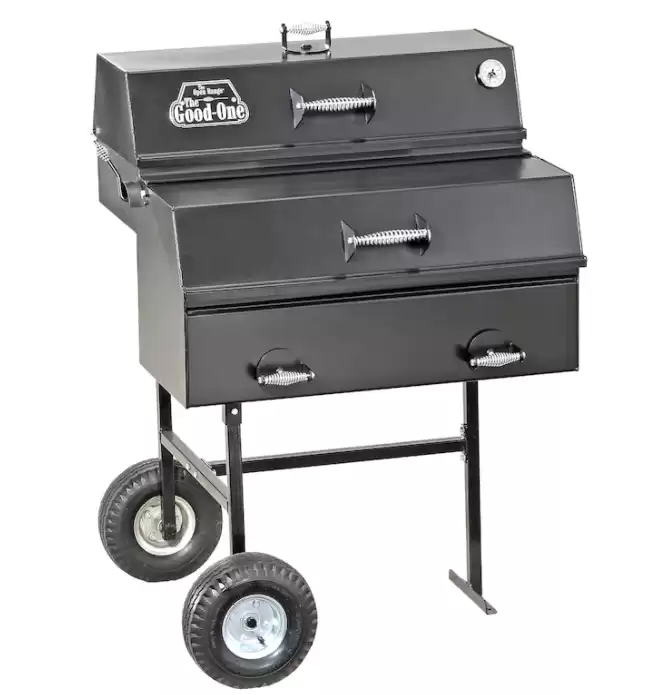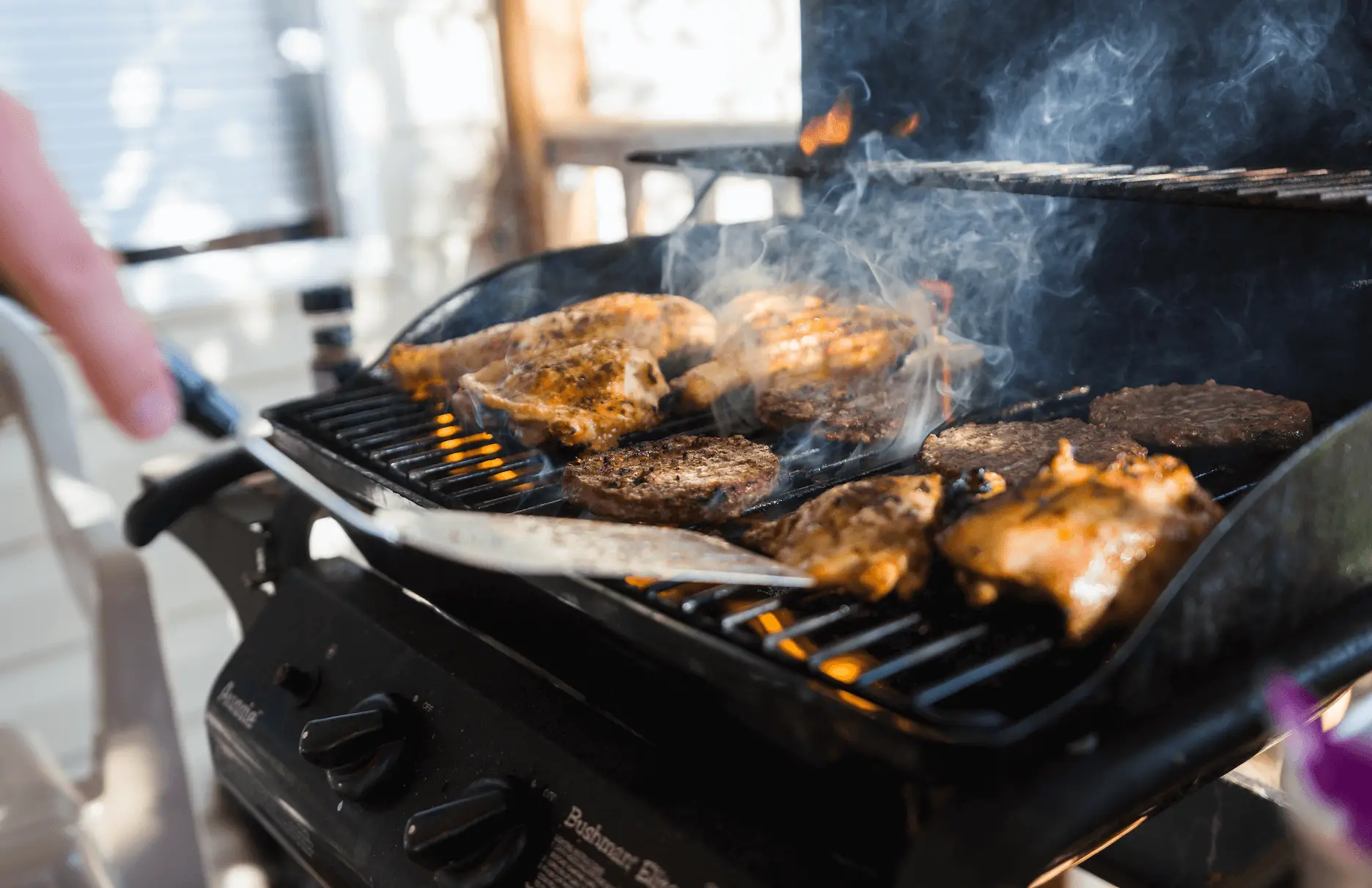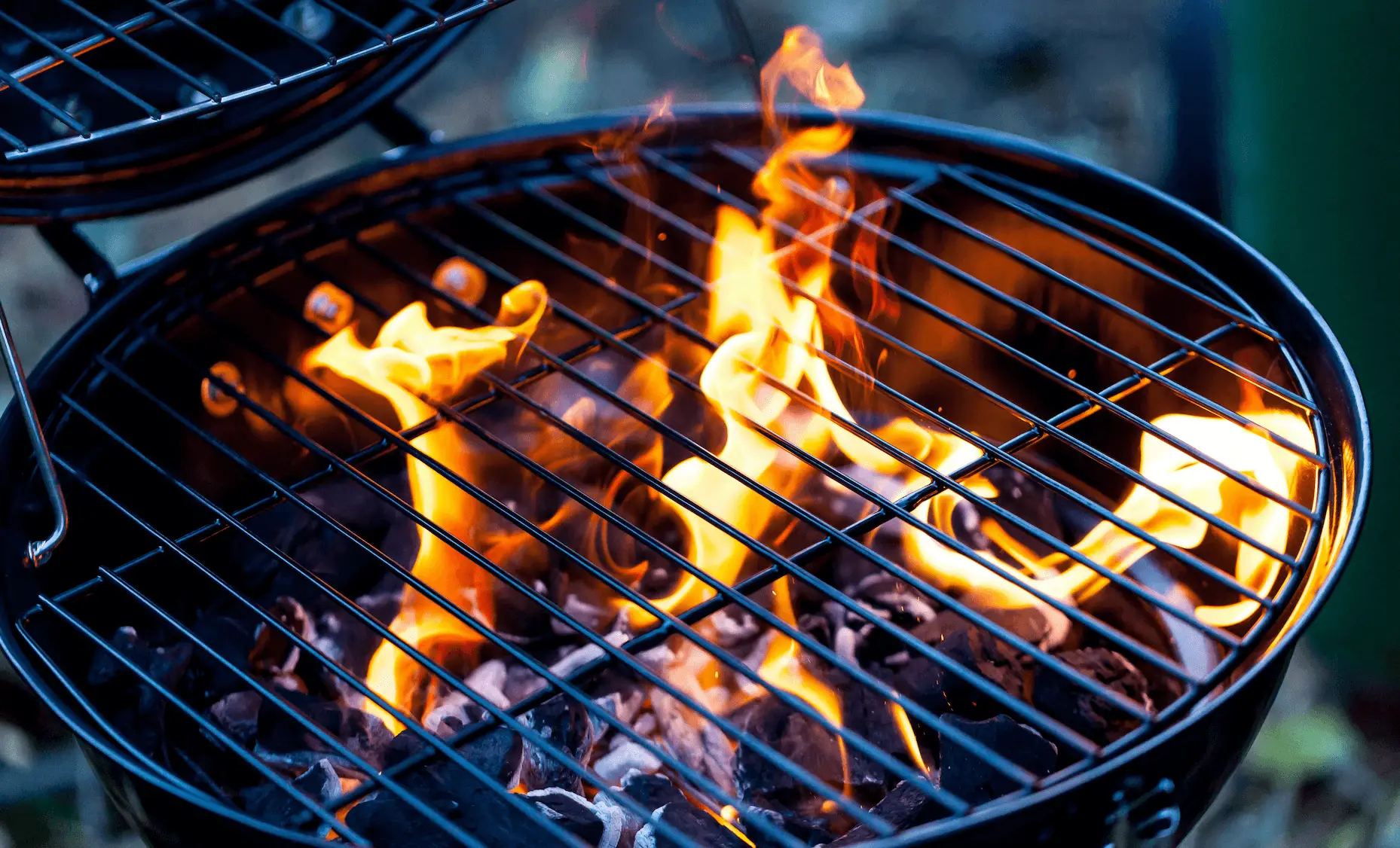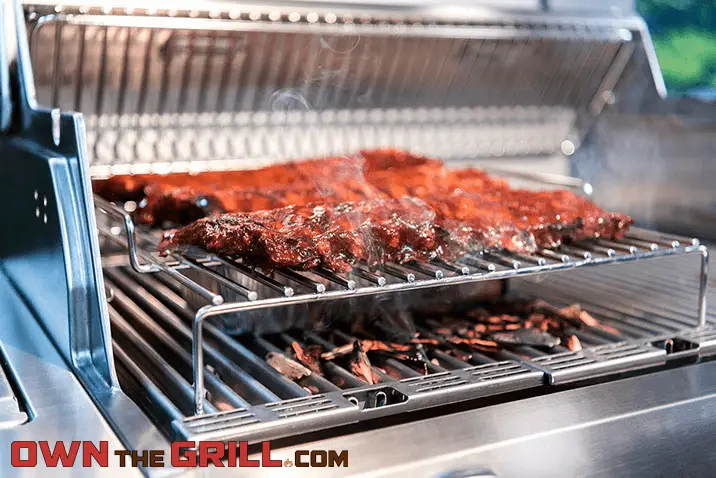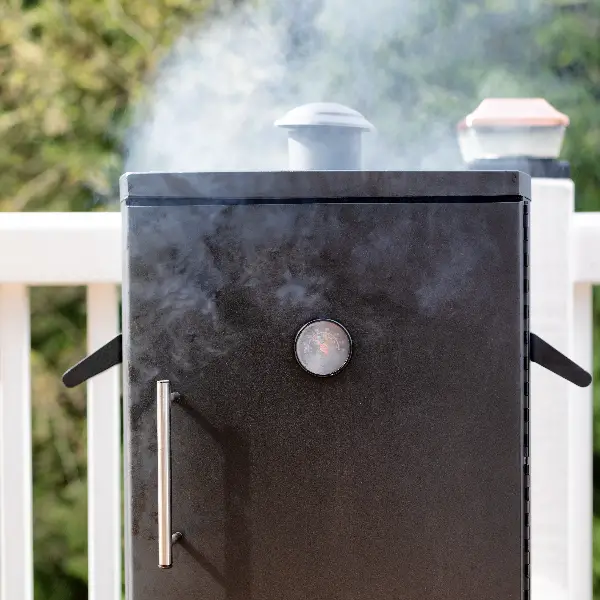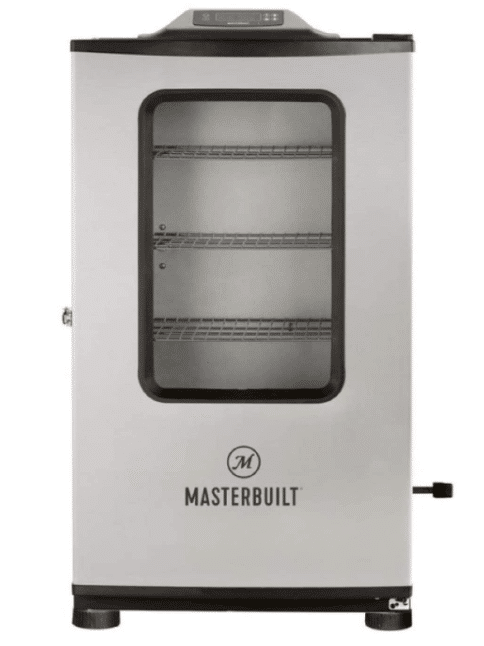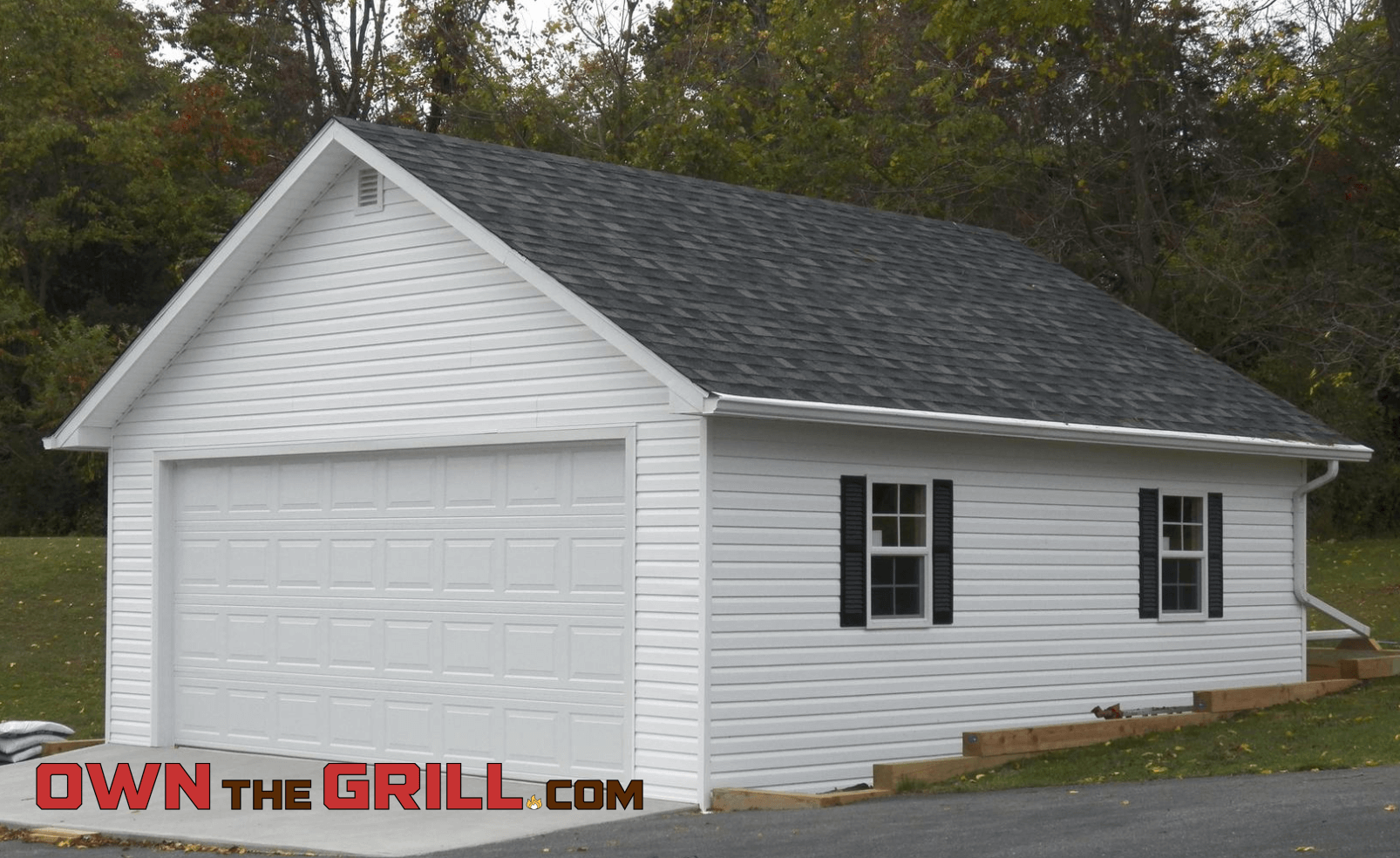This content contains affiliate links. If you make a purchase after clicking a link on this page, we might receive a commission at no cost to you.
A commercial BBQ smoker probably isn’t the right choice for your average backyard pit master. However, if you’re running a business or want an epic backyard BBQ set up, a commercial smoker is probably the way to go.
Commercial smokers are different from “regular” smokers because they are able to elevate your meat and simultaneously make it easier to crank out large amounts of BBQ without too much hassle.
These smokers can come in a wide variety of types including charcoal, electric, pellet, propane, and natural gas. Wood can obviously also be bought in a large variety of different flavors so that you have a large range of options to choose from.
Here we’ve rounded up a list of the best commercial smokers available today. We’ve included a few options from all of the different smoker types so there should be a great fit for you no matter what your ambitions are.
Best Commercial Smokers – Our Reviews
Here’s a look at our top choices for making BBQ on a commercial scale – whether that’s at your business or an ambitious at home set up.
Texas Original Pits Luling
This amazing smoker from Texas Original Pits comes in at the top of the list. It’s a high price point, but it’s worth every penny. The features and efficiency of the smoker make it one of the best ones on the market.
This smoker is also proudly made in the USA and has ¼ steel construction that gives you a stable and clean cooking surface of 1,080 square inches. The leak-free construction also ensures that you have maximum air efficiency and heat retention.
This keeps your meat at the best internal temperature without you needing to monitor it all the time. It also means you will burn less wood and save you money in the long run.
The chambers are 20-inches, and the main chamber is 42-inches. The firebox is 22 inches long. The offset firebox allows you to cook directly over the meat, which might be a good option depending on what kind of dish you want to make.
The dual airflow chambers allow you to have optimal and fast temperature control. The built-in pot warmer allows you to cook sauces for the meat or make side dishes all in one convenient area. The two 16-inch wagon wheels allow you to transport the smoker easily if you want to bring it somewhere you move the location of it on your property.
The chrome lid also traps in all the heat for easy cooking but doesn’t get hot or unsafe to touch. It also comes with a heavy-duty log crate.
Our favorite features include:
- 361 sq. inches of cooking surface in offset firebox for smoking or direct grilling over the flame
- Leak-free 1/4-inch steel construction for efficient burning and consistent temps
- Dual damper airflow system for precise temperature control, from a high of 700 to a low of 150
- Includes built-in pot warmer, firebox clean-out tool, 3-inch temp gauge, and 2-inch long X 1-inch diameter grease drain pipe with pail hook
Cookshack Amerique SM066 Electric Smoker
A commercial grade electric smoker that can smoke up to 50 pounds of meat at once with incredibly consistent temperature control.
Cookshack is one of the best names in the business as every one of their parts is made in the USA. They make some of the highest quality electric smokers on the market, period, and their Amerique SM066 is no exception to that rule.
Just like the smaller models, this option by Cookshack has 850-degree spin-glass insulation. It allows the inside to stay at the same temperature and keeps the outside of the smoker cool to the touch. Digital technology allows you to slow cook your meat at the temperature and time that you set.
The LED controls will allow you to see the temperature and all the settings that you input to ensure that the meat is cooking the way that you want. The meat probe comes with the purchase and makes slow cooking any kind of meat much easier.
The smoker has a 50-pound capacity, and the temperature range is 140-300 degrees. The smoker will use 1 to 2 ounces of wood for 60 pounds of meat. Like some of the other Cookshack models, the plates of a vertical size of 5.5 inches.
Some of the best features include:
- Superior insulation maintains a consistent internal temperature and the outside cool to the touch
- 1,008 square inches of the cooking area allows up to 50 pounds of food to be smoked at once
- Digital controller with meat probe allows precise automatic cooking to pre-set internal temperatures
- With the 140-300 degree temperature range, you can smoke meat, fish, and vegetables for a variety of dishes
Texas Original Pits Luling Single Lid Offset Smoker
This smoker is from Texas Original and has some amazing qualities for someone looking for a versatile smoker with all the bells and whistles. It’s also the superb quality and will last you for years and years to come.
Compared to the previous Texas Original model we looked at, this one is a little bit smaller in terms of cooking surface area.
All parts of this smoker are handmade in the USA for maximum quality protection and amazing construction that will give you a smoker ready to survive years and years of smoking.
It’s 1/4-inch steel construction and guarantees a completely stable and flat cooking surface of 864 square inches. The double-weld construction is completely leak-free and has maximum airflow efficiency and heat retention. This means you will burn less wood for longer.
It has an offset firebox that allows you to cook directly over the flame if you need a nice sear. The main cooking chamber comes with two 16 ¾ x 15-inch cooking grates and the offset box comes with one 13 ¾ x inch cooking grate.
Attached to the lid you will find is a chrome stay-cool spring handle that keeps your hands cool while the smoker is very hot. The wagon wheel design at the bottom gives you the ability to take the smoker with you to events, if needed.
The best features that come with this smoker are:
- 200 sq. inches of cooking surface in offset firebox for smoking or direct grilling over the flame
- Leak-free 1/4-inch steel construction for efficient burning and consistent temps
- Dual damper airflow system for precise temperature control, from a high of 700 to a low of 150
- Includes built-in pot warmer, firebox clean-out tool, 3-inch temp gauge, and 2-inch long 1-inch diameter grease drainpipe with pail hook
Cookshack Smokette Elite SM025 Electric Smoker
The Smokette Elite SM025 is an electric smoker that is sure to handle your commercial BBQ needs – and it’s not over the top expensive.
It’s completely stainless-steel and has 850-degree spin-glass insulation. This ensures that the smoker stays completely cool to the touch from the outside, so you can avoid burns and injuries. The inside of the smoker will maintain the same temperature until you change the settings.
The controller also functions as a meat thermometer, so you always know the temperature of your meat. You can cook at all times of the day and night with an LED panel that displays the cooking temperature and the internal meat temperature.
For every 60 pounds of food that you cook, you will use about 1 to 2 ounces of wood. Each of the cooking grates has a vertical space of about 5.5 inches. The smoker also has two 18 x 14-inch nickel-plated shelves. This is plenty of room to hold the ribs or briskets that you want to cook. It’s also a great size to cook for the entire family.
The top qualities of this smoker include:
- Convenient controls- The LED lights and easy-to-use controls on this smoker make it a great choice if you like to cook in the evening or if you are a beginner and need easy control to smoke for the first time.
- Superior insulation maintains a consistent internal temperature and the outside cool to the touch
- 504 square inches of the cooking area allows up to 25 pounds of food to be smoked at once
- Digital controller with meat probe allows precise monitoring of internal temperatures
- With the 140–300-degree temperature range you can smoke meat, fish, and vegetables for a variety of dishes
Smokin Tex Pro Series Commercial Electric Smoker
Smokin Tex is another top brand for smokers. In particular, their electric smokers give you a high-quality smoking experience for a lower price than what many other smokers cost.
Since the Pro Series Commercial is an electric smoker, it’s very easy to use. You just plug it in to get started. The door is simple to open and close, and you can easily just stick in the wood and start using the smoker. The smoker can be used between 100 to 250 degrees. It requires no attention while cooking and can give you an amazing meal with little to no supervision.
The entire smoker is stainless-steel and double wall installation makes the smoker completely cool to the touch. The smoker has 5 shelf positions and comes equipped with a stainless-steel drip pan, four caster wheels, a cookbook, and a very thorough instruction manual.
The electric smoker requires 700W/10 amps/120V. Smoker Dimensions (in inches): 17 1/2 W x 21 D x 29 H (including wheels) 26 3/4 H (without wheels).
Some of the top features include:
- Double-walled for enhanced insulation
- Stainless steel construction makes everything durable and dishwasher safe
- Temperature range of 100-250 degree
- 38 lb maximum capacity
The Good-One Open Range Charcoal Smoker
If you prefer the flavor of a charcoal smoker, the Good One Open Range is an excellent chocie. The Good-one brand is well-known in the smoking business and will give you amazing quality smokers for a good price.
This is a third-generation smoker and will give you moist and juicy meat. It’s a smoker and grill combo, so you will have all the options available to you when using this set. It’s also perfect for direct and high-temp grilling. The grill grate has 332 square inches of grilling and area, and the two smoking grates have a combined total of 664 square inches.
The firebox also has a removable drop-in ashtray and a charcoal grate. The smoker lid is 11-gauge US steel and can be reversed by the bolt on the hinge to suit whichever side you prefer to smoke or grill on.
The smoker box also has a safety feature that helps prevent tampering or heat smoke loss.
The best features include:
- Internal damper allows control of how much smoke enters the chamber
- Twist-style air intakes provide simple and precise internal temperature control
- The smoking chamber above and behind the firebox prevents hotspots
- Reversible smoker box lid lets you decide which side to grill on
Types of Commercial Smokers
For the most part, commercial smokers tend to be either traditional offset smokers, electric smokers, or perhaps a pellet smoker.
Generally speaking, electric and pellet smokers tend to be super easy to use and can crank out large amounts of food without hassle.
On the other hand, traditional offset smokers deliver the highest quality food but take a little more work and babysitting. These are the type of smokers used at most great BBQ joints – offset smokers just deliver that authentic flavor better than any other cooker.
If you didn’t see something you loved in this resource, you may want to head over to our list of the best high end offset smokers – many of those units also work great in a commercial setting.
Best Commercial Smokers – Final Thoughts
All the smokers on this list though will give you an extremely efficient and hard-working smoker that will last for years to come.
At the end of the day, that’s what the best commercial smokers are all about – high quality BBQ and durability. All of the units above are built to crank through BBQ and will last as your business grows.


